10 Statements About Leica M Gear
Photographing with Leica gear automatically moves you into a special world of photographic gear and attitude which comes with pros and cons. And this is what I want to talk about today. I categorize my main observations of the past 6 years with 10 Leica camera gear based bullet points below.
1. Leica makes the best lenses
This saying derives from the earlier days in photography especially when Leica actually developed and marketed one of the first 35 mm based rangefinder film cameras. Leica had lots of knowledge in optical design from building microscopes and objectives. Their lenses remained "gold standard" for many years to come with a very unique character. Things started changing when Japanese manufacturers entered the market with alternatives to Leica screw-mount L39 lenses. A race started in keeping rangefinder lenses small but making them faster in maximum lens aperture - often Leica stayed ahead of the competition. SLRs changed the game another time significantly in the late 50s where predominantly Japanese camera manufacturers successfully entered. Leica also entered later the SLR market (and then stopped making them) but kept focusing to this day on rangefinder cameras. In the past few decades, (D)SLR lenses have become optically excellent, and even Leica lenses kept their reputation as one of the best, regular users can get nearly undistinguishable image quality from a Japanese camera brand for a much smaller cost. Many Leica lenses have become collector items driving further up used as well as new Leica lens prices. So even Leica lenses are still technically excellent, they are now much more comparable to competitive lens products than > 30 years ago. But the name has developed into a luxury brand reputation, and there are not few who purchase Leica lenses as investment option to sell it even for a higher price later. Trick is to find Leica lenses which are reasonably priced, have an outstanding built and image quality, and fit the photographer's need. When I get such "gem", I don't let it go!
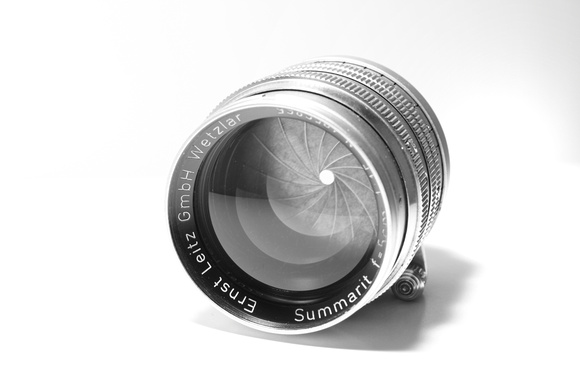

The vintage Leica 50/1.5 Summarit LTM or M lens (it came in both mounts) is such gem in Leica's lens line.
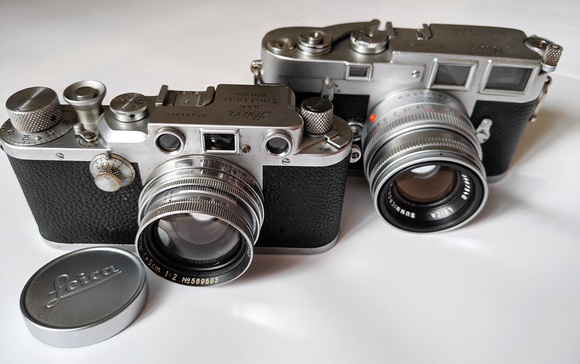

Two Leica 50 mm versions which are 60 years apart from each other: On the left, the Leica 50/2.0 Summitar LTM lens attached to my Leica IIIc camera, on the right the modern Leica 50/2.0 Summicron pre-ASPH lens attached to my Leica M3.
2. Leica means luxury
One the first look this is the case. I don't even go into well advertised reasons why Leica gear supposedly needs to be expensive - German manufacturing with highest standard in quality control etc. Certainly all good reasons but still won't explain the huge jump in price compared to highly reputable Zeiss lens gear for example. Leica keeps purposely prices high by making gear only in limited amount. Since demand seems always high, prices remain high and never drop. So far I have not seen any Leica lens which has dropped in value. If a lens is made as new item in larger quantity for regular consumers, the lens price might stay constant over multiple years after introduction. But for many other Leica lenses, the price rather increases significantly over time. Depreciation occurs with digital Leica camera gear. But used lens prices won't drop significantly from the original introduction price for quite a while. You can get now in 2021 a used standard Leica M 240 for about $2500-2800. The camera was introduced 2012 for approx. $7000. If you compare this to the drop in value of other digital camera brand gear, Leica cameras hold their value much better. This is one benefit when buying into Leica gear - you can often resell it easily and for a smaller loss in value compared to the purchasing price. Debit remains to make the first plunge into the Leica eco-system. IMO best option is to buy Leica gear used - instead of going after the latest and most expensive "luxury" priced gear, better go for a camera one generation earlier and inform yourself about older Leica lens versions to buy used. You might not shoot with the latest digital sensor on the market by doing so, but it won't stop you from taking remarkable photos with the gear.
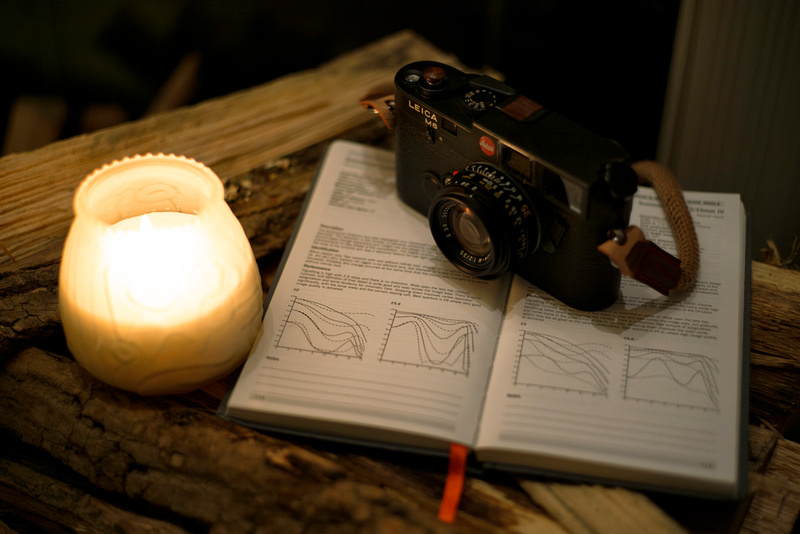

My Leica M6 with 35/2.0 Summicron IV lens sitting on the 7th edition Leica pocket book with the corresponding 35/2 MFT charts. The photo itself was taken with my Leica M-E 240 camera and 50/2.0 Summicron pre-ASPH lens.
3. Leica has a huge used gear market
From my experience this is definitely the case and one big benefit combined with the brand. Even the latest camera gear is backwards compatible with lenses made in the 1930s! A simple screw-mount/M-mount adapter is enough to use the big majority of vintage lenses on modern digital (or film) Leica rangefinder cameras. It is a personal decision to use vintage lens gear and/or newer lenses. Leica has released so many different lens versions just in one focal length that it will take time for a new Leica user to familiarize just with the basics and differences between versions. This is definitely a challenge I struggled also with for quite some time when I started with Leica. I was forced to crosslink given serial number and lens version to determine how this corresponds to performance. It is important to vest this time since lens versions can be very different in price for multiple reasons. If you are lucky, you might find a Leica lens which is priced much lower than it should be for this specific lens version. Likely the lens was grouped into the wrong lens version category by the seller. It doesn't happen often though - I only experienced it once which saved me a good amount of money when I purchased this lens. In general patience is a virtue when looking for used Leica gear - good stuff tends to move fast, but with patience you can simply wait for the right opportunity. I waited about 3 years to finally find a nearly mint Leica 35/2.0 version IV lens for a price below my upper limit for it. The pandemic has driven used Leica prices up due to limited supply because less people were selling. I found times in the past that the used market had good choices to purchase from and others where I decided to rather wait. It is rather unpredictable, so it is a good idea to keep an eye out if interested in something to purchase used. Some stores/websites are better than others to purchase used Leica gear from my experience, but I am not disclosing here my preferred sources. You will figure it out yourself when you did your homework first! Make sure to avoid accidentally going after collector lens items if you want to use regular camera gear.
4. Leica community
Leica takes good effort to maintain a community of users. There is the fee-based LHSA membership program and the free online Leica forum just to name two. I don't want to over-generalize, but Leica seems to attract enthusiasts who are embedded with the name Leica and people who like technology excellence. There is also a large group of collectors and resellers. Be aware of this in discussions because it seems generally open for criticism when bringing up gear price and competitiveness to other brands. But the Leica forum can be a good resource to get specific help when looking for a photography or Leica gear based solution. The forum has quite good discussion threads about analog gear, too. You will find multiple Leica-based or Leica-associated YouTube channels. I benefitted a lot in gaining technical knowledge about camera and lens versions from Leica Store Miami videos and photography-wise from a series named Leica Conversations.
5. Das Wesentliche
Means in English "The Essential". Leica uses this slogan to advertise ease of use and lack of high tech controls in their cameras as benefit over more advanced competitive cameras which tend to have more bells and whistles. Leica purists applaud this, and for many this is an important reason to use Leica. On the other hand, I find myself conflicted with this. I can see that having too many options in a camera can be confusing and distracting from focusing on the composition and just at focusing, aperture, and exposure time to take the shot. This is probably because I am using multiple brands with different kind of cameras in parallel. And sometimes more options to have in a digital camera are a benefit! I can always choose not to use an available menu option, but I can never use it if it is not available in the first place. Video in my Leica M-E 240 camera is such example for me - I rarely use video, but it is a nice option to have if it is actually needed. IMO it doesn't make the menu more cumbersome if there are one or two video options designated to select from the main menu. Good thing is that Leica now offers different variations of the main camera version - versions with limited and with more functions.
6. Leica gear is less intrusive
Yes. But it depends what camera is used within this description and to which other systems it is compared with: Leica LTM/M and the Leica Q cameras are generally small that they can be easily carried around in an inconspicuous camera bag or just carried around the neck or with the hand strap. M lenses are small that the overall camera plus lens size is similar to a Fuji mirrorless camera (MLC) system. Since MLCs are more common in the market, people often mistake Leica M cameras for a MLC. This is good because it is even easier now as Leica shooter to blend in. The red Leica dot can be detrimental for inconspicuous shooting but never actually happened to me in the US where the brand is less known (but I experienced it once to be a big eye catcher when shooting with my Leica M6 in Germany a few years ago). Taping the dot and name labels helps but can harm the paint when the sticker is removed. Really small in size are older Leica II and III series film cameras with L39 (or LTM) screw-mount. I love to use my IIIc for travelling when I need to keep my film photo gear as minimal in size as possible. Those pre-M series rangefinder film cameras don't have a red dot and only carry the Leica name on the top plate. Other Leica cameras and lenses like the newer SL and S-series are much larger in size and much more rarely used for example for street photography.
7. Leica's rangefinder system is best for manual focus lenses
This is true from my experience. Hitting the focus with any of my Leica rangefinder cameras is faster than using the same manual lens attached to my Sony A7R MLC with focus peaking or focus magnification. But rangefinder focusing can be cumbersome also in specific situations - for example when the composition includes lots of repeating patterns like a blind or brick wall for example. In this case it is better to estimate the distance to the subject and adjust slightly with the rangefinder after some zone focusing. Focus tabs on lenses can be helpful even it took me a long time to get used to them: when focusing with the left pointer finger and holding the camera to the eye, the more the finger is extended on the focus tab, the further away the subject is and closer to infinity. When the pointer finger is pulled back, the lens is focused to closer distance. A tab position in the middle and vertical underneath the lens is about 1.5 meters (5 ft) which is the standard distance for street or portrait photography with some zone focusing to create sufficient depth of field. I find the focus spot much easier with any rangefinder camera than I can do it with a SLR and split focus screen.
Also keep in mind that Leica made and makes different viewfinders. The smaller the magnification number, the smaller the middle rectangle (finder image) gets to align both of the image parts for focusing. Probably one of the best viewfinders is in the Leica M3 especially when shooting 50 mm and longer M lenses: this camera has a unique magnification of 0.91x which is no longer made. With more shallow depth of field at longer focal lengths, this magnification ensures much better focusing especially also for faster lenses. Debit of larger magnification is that wide frame lines like 35 and 28 mm get too hard to see in the viewfinder. Standard magnification in most Leica M cameras is around 0.68x or 0.72x. Sometimes you might see one with 0.58x magnification which is made predominantly for using the camera with wide lenses.
Debit of rangefinder focus systems is that they might require recalibration after many years of usage. In some cameras like the Leica M6, a reflection phenomena in bright light can occur which is called patch flare. Then the finder image window turns reddish and doesn't move anymore when trying to focus. Only way to to resolve this hiccup is by shaking the camera body carefully a bit back and forward. This might take a few seconds, and I had it happen that by then the moment was gone where I needed to take a picture of. The M3, M2, and M4 cameras as well as the ones starting with newer versions of the M7 and later camera versions don't suffer from this.
The minimum focus distance (MFD) of rangefinder cameras is at least 0.7 or 1.0 m. Leica lenses normally don't offer a focus scale below this MFD. But other M lenses like some Cosina-Voigtlander lenses do - when using them on a Leica M camera without LiveView, make sure only to focus down to 0.7 m (or 1.0 m with the Leica M3 for example). Otherwise you will misfocus and get a blurry photo - happened to me multiple times! Digital M cameras can make use of shorter MFD lens focus with either LiveView or electronic viewfinder attached. Both methods circumvent the rangefinder focus system.


View through the Leica M3 viewfinder with 50 mm frame lines. The rectangle in the middle is the finder image to focus by overlaying the viewfinder area with the rangefinder patch view.
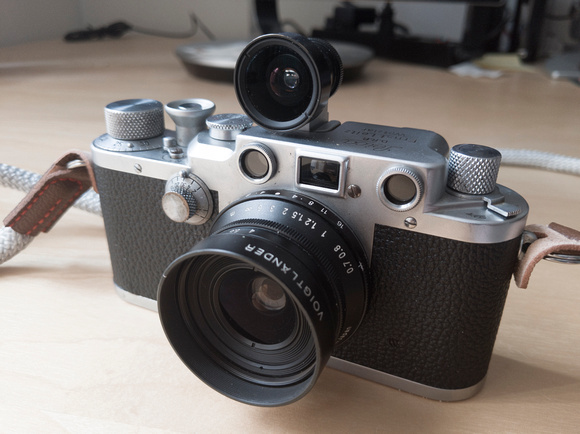

For wider focal lengths, an external viewfinder is needed to compose the image. Focusing still needs to be applied through the rangefinder. Here shown the Cosina-Voigtlander 21/25 external viewfinder to be used with the 25/4 Snapshot-Skopar LTM lens on the Leica IIIc.


With digital Leica M cameras starting with the M 240 series, external electronic viewfinders (EVFs) can be used to work with any attached lens. The VF-2 EVF allows vertical composition, too. Here shown in combination with the Leica M-E 240 and 35/2 Summicron-M lens Vers. IV.
8. Leica M and long lenses?
Biggest limitation of the Leica M system is using the rangefinder system with longer lenses. 135 mm already gets difficult to focus within the rangefinder patch (better to do this with an external viewfinder on the hotshoe), and even less common 200 mm lenses are the maximum what is available for this system. I believe most Leica M photographers use lenses generally only up to 90 mm focal length myself included. This limitation in tele lenses is a debit when a longer reach is needed for sports/race events, and wildlife. For action photography, Leica M cameras are limited to 1/4000 sec in the most modern ones - film Leica M cameras only shoot up to 1/1000 sec. For longer focal lengths, either another camera brand system is better, or the Leica SL which offers longer lenses.
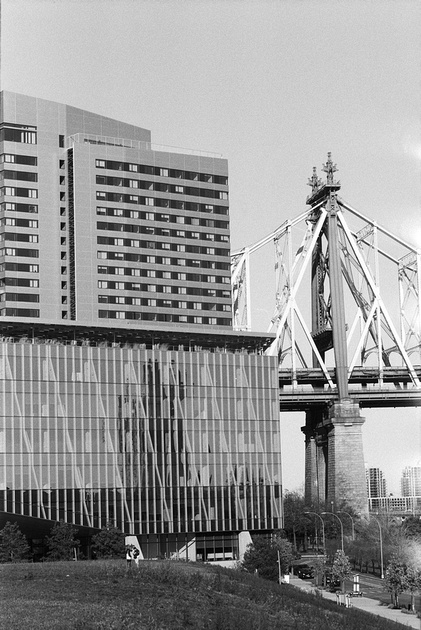

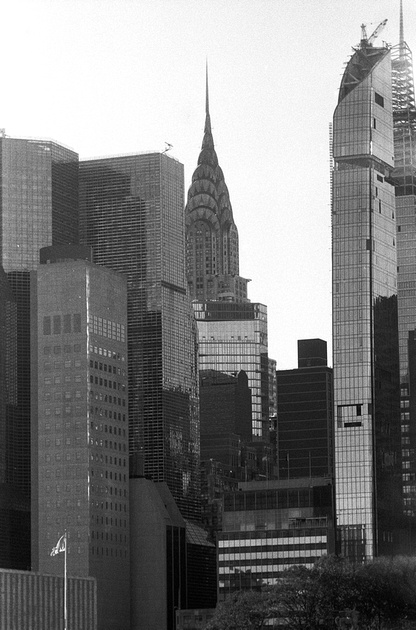

Photos above: Taken with my longest M lens, Leica 135/4.5 Hector lens on my Leica M3. Internal rangefinder focusing was applied.
9. Shooting wide with Leica rangefinder cameras?
Leica rangefinder cameras only offer frame lines down to 28 mm but not wider (older cameras are limited to 35 mm like the Leica M2 and 50 mm in the Leica M3). I love shooting wide, and it is not uncommon for me to use 21 mm for landscapes or indoor photography. In such case, I need to use either an external 21 mm based external viewfinder which is then mounted on the hotshoe. Even there is some parallax between external viewfinder and the view through the lens, it is small enough for wide lenses that it doesn't matter. Alternatively, I can make use of LiveView or an external electronic viewfinder (EVF) on a digital Leica M where the image is exactly what the sensor sees. I believe the widest available rectlinear M lens is the Cosina-Voigtlander 10/5.6. Only one fisheye lenses is currently available in M mount - the TTArtisan 11/2.8 lens (stay tuned for my review!). Zone focusing works very well with ultra-wides on Leica film cameras. It is especially easy with digital M cameras and using LiveView or EVF.
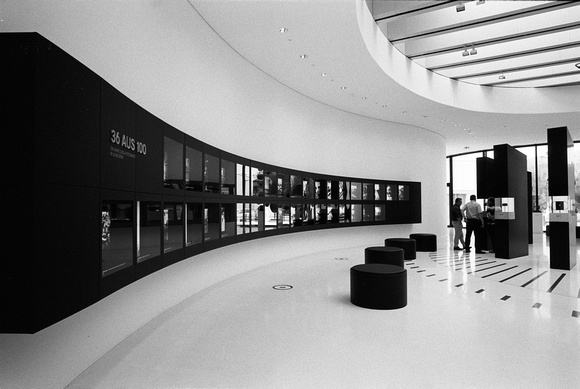

Photos above: Taken with my widest M lens, Cosina-Voigtlander 12/5.6 lens on my Leica M6. I used the Voigtlander 21/25 external viewfinder which provides approximately a 12 mm field of view outside the frame lines.
10. Leica Service
A needed but unfortunately expensive option to be aware of when buying in this system! Most common service with Leica M cameras and lenses is the so-called CLA: Cleaning-Lubrication-Adjustment. Prices for this service vary significantly between Leica service centers and third party Leica-focused repair shops. Leica service centers tend to take a longer time with service and repairs. For repairs of older Leica M film cameras I recommend from personal experience third party shops. I sent in my Leica M3 twice to a third party repair facility after I bought it used: first for CLA and then a few years later again after the shutter broke. I also had a CLA done with my Leica IIIc and a 50/2 Summitar LTM lens which I won at a local auction. Not all Leica M cameras are accepted by third party repair facilities - often their possibilities are limited in case electronic parts of older M cameras have to be replaced. Make sure you send in your gear as certified package where a signature is required when delivered.
